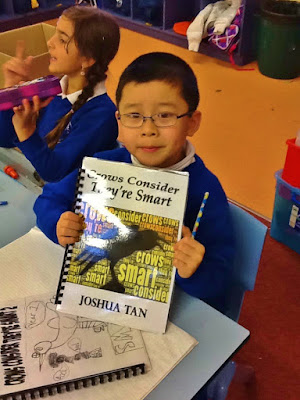Launching Writing Projects From The Notebook
The writer’s notebook is a tool for writing. It is not intended for the entries to become ensnared; trapped in a word prison. The notebook contains many beginnings and not all of them are destined to be launched beyond the notebook pages, but their presence affords the writer options. The skill lies in identifying and lifting out that piece, or pieces, the writer feels have the most potential for developing into something beyond the notebook page. It will be a piece they can imagine themselves working on for a longer time.
Engaging writers in conversations that encourages a desire to delve back into notebook entries, engage in some considered re-reading and consider which pieces have the most potential for further attention should be a priority for those of us who are teachers of writing.
We must also ask them to think about genre and begin to plan for a writing project that may be launched from the assembled notebook entries. Remind your writers that the content of their notebook entries will help them to decide the form of the writing project. This becomes an important consideration for any writer who is beginning to form a vision of how they might move their raw words from the notebook towards a more polished piece of writing
This movement from notebook entries to writing projects is an important objective . We should aim for the movement between the notebook and sustained writing projects to become quite a fluid transition over the course of the year.
Helping the inexperienced writer avoid becoming trapped in a whirlpool of copious notebook entries (that never grow and develop into something more fully developed) remains a critical consideration, for those of us responsible for teaching writing. It can prove quite daunting for inexperienced writers to strike out in this direction. They keep adding notebook entries, but never quite seem to reach the launching pad when it comes to identifying a piece that wish to more fully craft. It's as if they are trapped in a notebook vortex.
For this reason young writers need to see how a more experienced writers goes about this process of identifying a suitable notebook entry, articulating their thoughts regarding a suitable genre and then sharing the logical next step of planning and launching a writing project. A teacher is afforded a wonderful opportunity to shine a clear light on possibility at this point of the process. The potential of notebook entries must be mindfully exposed in ways that encourage the young writer to envision such moves with their own notebook entries. Encourage them to go on a treasure hunt...
As stated earlier, notebooks sometimes contain entries destined to go no further. Many of the collected entries may represent a promising start and need to be reread, reconsidered and expanded. Sometimes a notebook may contain several related entries around a topic or theme. On other occasions notebook entries may be connected through form or genre- a number of poems, recounts, memoir pieces, information pieces, viewpoints and opinions may be present on the pages. Maybe they can be combined into a collection- a book, an anthology perhaps?
For the young writer a working sense of genre takes time to develop. Teachers have a strong role to play in expanding genre possibilities from which the writer may choose. Hybrid texts should be discussed as a further possibility.
Encourage students to practice regular rereading of their notebooks and have them note the entries that hold the most appeal.
Making a plan for the writing project does not have to be overly complex. A simple time line or some dot points may be all that is required. This can be done in the notebook. Pre-writing should help the writer, not act as a hindrance. Don’t overdo the planning with graphic organizers, thinking webs, and story maps. The energy needs to be preserved for the most important part- the actual crafting of the words. Encourage the writer to develop a vision of the finished piece.
• What do you want to include?
• How will you organize the writing?
• What are some craft moves you have identified to give your writing more power?
• What should happen first, next, last?
• How do you want to publish it?
• Where do you want to publish it?
The aim of all this effort is allow the young writer to experience the joy that flows from creating a piece of writing, both powerful and memorable, from the raw stuff gathered earlier in a notebook. Something more polished, of which they can take pride. It’s a journey worth taking. It is also a journey that becomes easier with practice.








Comments
Post a Comment